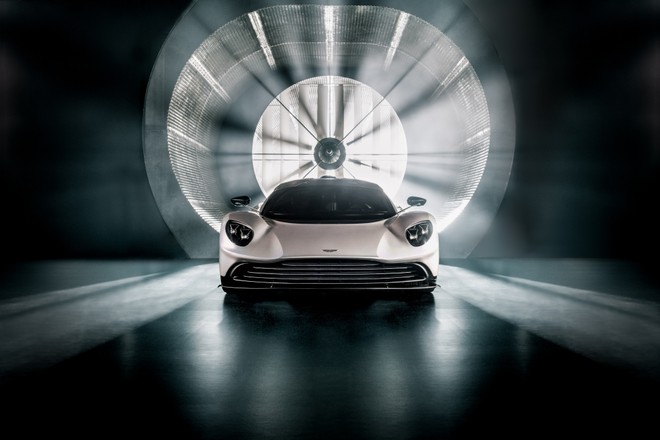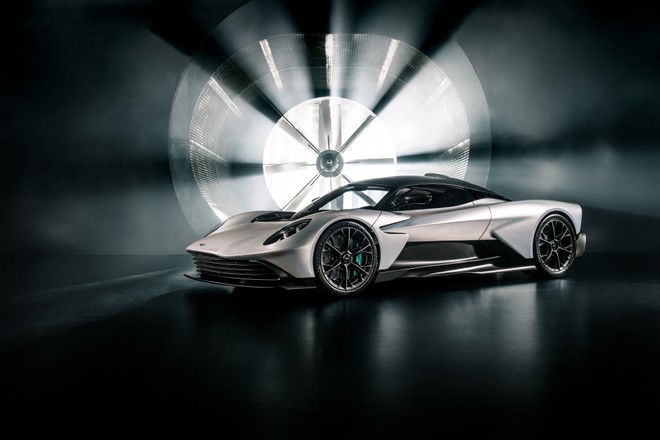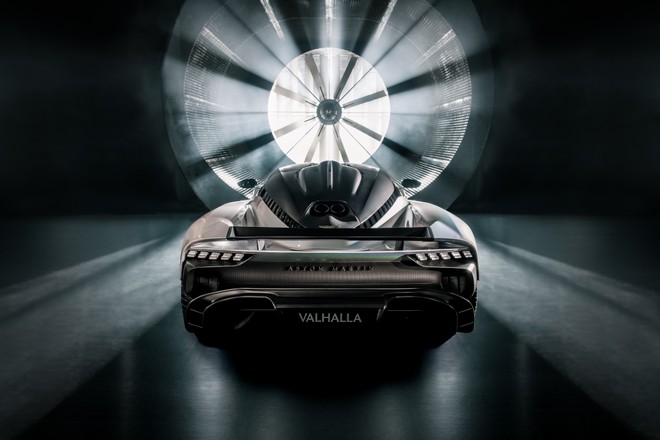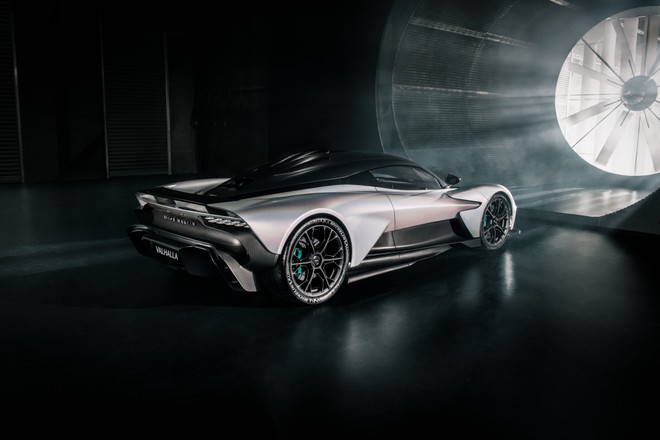
Aston Martin has used the skills acquired in Formula 1 to develop its new Valhalla supercar. Presented for the first time in 2021, it will enter the in production in 2024. This model will be produced in 999 examples. The first working prototypes will hit the road by the end of the year.
Now, the car manufacturer wanted to tell something more about on its new mid-engine supercar.
FORMULA 1 TECHNOLOGY 

The race-proven methodologies, skills and technologies used by the Aston Martin Aramco Cognizant Formula One teamwere adopted by Aston Martin to improve the development of this model. In F1, simulation tools are used a lot to develop the car. Process that is was also adopted to create the new supercar. In fact, 90% of the vehicle's dynamic characteristics and set-up are been completed on the simulator, while the final development phase is been completed on road and track.
The development of the cockpit also benefited from some direct cues from Formula 1. Aston Martin says that the driving position is It has been optimized to provide the driver with control worthy of a racing car, in order to maximize driving pleasure.
The driver's heels are raised by a double floor, which also contains electronic modules, and the carbon fiber seat can be reclined at a greater angle to obtain a more comfortable sitting position. close to that of the AMR23 racing car, while still offering the comfort of a road car.
AERODYNAMICS 

Also for the development of aerodynamics, the car manufacturer has exploited the technologies of Formula 1. All the elements of the bodywork have been designed to generate downforce and minimize resistance. However, the new Valhalla is not limited by F1 regulations and this allowed for greater freedom in development.
The supercar, in fact, can count on active aerodynamics both at the front and at the rear, capable of generating over 600 kg of downforce at 240 km/h. Just like the single-seater, the new supercar also has various aerodynamic elements such as the front wing largely hidden from view which can be flat in the DRS position to reduce aerodynamic drag or it can be inclined upwards to generate greater downforce.
At the rear, however, the multi-wing elements is flat to generate a basic level of downforce with even minimal drag. However, in On the runway the wing is raised high to maximize its aerodynamic effectiveness. Instead, the small slits on the sill, just ahead of the rear wheel, act as mini-diffusers to channel airflow outwards and upwards from under the car, increasing downforce.
Aston Martin technicians carried out this development work using the same CFD software as the Formula 1 team.
CARBON FIBER MONOCOQUE 

The supercar can count on a carbon fiber monocoquedeveloped by Aston Martin Performance Technologies (AMPT), using Formula 1 technologies. The objective was to maximize rigidity and minimize weight. The carbon structure of the Valhalla is was created using innovative, proprietary technology developed for Aston Martin. The car manufacturer explains:
The upper and lower sections of the structure are molded from carbon fiber using a combination of the RTM (Resin-Transfer-Moulding) process and F1-derived autoclave technology. The result is a unique passenger cell, extremely rigid, strong and lightweight, offering best-in-class dynamic structural characteristics and exceptional safety, without compromising driver and passenger ergonomics.
ENGINE V8 HYBRID 

The beating heart of the supercar is a Plug-in hybrid powertrain made up of a 4-litre twin-turbo V8 engine combined with three electric motors. Overall, there are 1,012 HP available.
The two electric motors on the front axle allow Valhalla not only to have all-wheel drive, but also to completely independently control the torque applied to each of the front wheels (Torque Vectoring). The front electric motors are also used for reversing. In this way it is It is possible to save weight on the rear transmission.
A third electric motor is integrated into the transmission and provides additional power to the rear wheels, as well as acting as a starter/generator for the internal combustion engine.
Insane reception and lightning-fast charging? Motorola Edge 40 Pro, buy it at the best price from eBay at 719 euros.